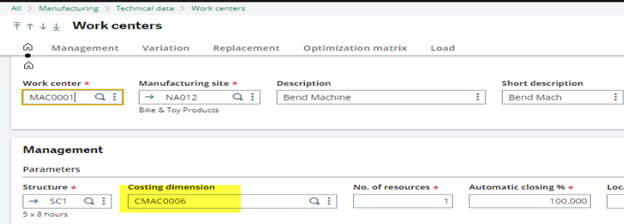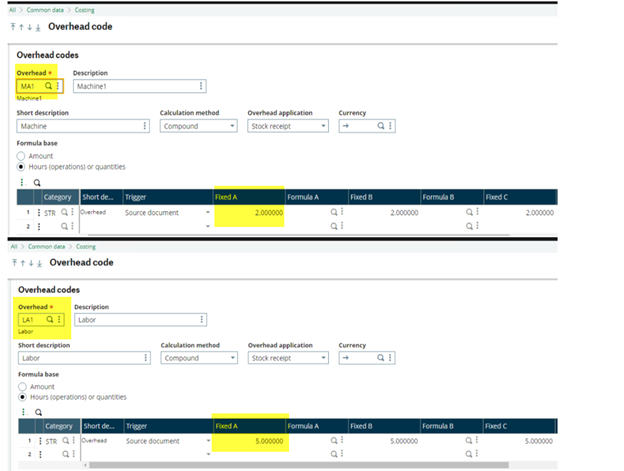The standard cost calculation function (Costing, Cost calculation) is used to calculate the cost for a finished goods product or semi-finished goods. It can be used for one product or a range of products and it is unique for a product-site and year. When this utility is processed, it uses the routing data for the work centers and uses the data stored in the product-cost. It is possible to print a document summarizing or detailing the calculation of the product.
In Sage X3, one of the documents is called NA-ITMCOST. This document has three sections:
The first section is the cost of the component or raw materials; it includes the component name, QTY, unit of measure, the cost of the material, and the total cost. The information normally pulls from the most recent Standard cost record (Common data, Products, Products-costs) for the component as long as CLCSTDMAT parameter (Setup, Parameter values, TC Common data, COS Cost) is set to Standard cost.

The second section is the work center cost which pulls from the Costing dimensions entered into the work center (Manufacturing, Technical data, Work centers).

Costing dimension information such as Standard setup and Standard run can be entered in Common data, Costing, Costing dimension.

Looking at the document generated by the Standard cost calculation, the first line has the setup time for the labor multiplied by the setup rate which equals the cost, then the run time for the labor multiplied by the run rate to come up with the cost. Adding up these two Costs (including Overhead) will come up with the Total cost. The second line has the machine step time and rate and the machine time and rate. Multiplying the time with the rate for the Setup, and multiplying the time and rate for the Run, then adding up the two costs, will land with the Total cost for the machine. Another thing to note is adding up the Setup Cost vertically will give the total cost for the operation which includes all work centers. The same thing applies to Run Cost, adding the numbers vertically will give the total cost for all work centers.

The third section in this document is the Overhead summary. This section contains the description of the overhead, Product, and Total.

The information in this section is coming from the Overhead code that is entered in the Costing dimension (Common data, Costing) for each work center costing dimension.

Overhead codes are created in Common data, Costing, Overhead codes. Each category entered in the overhead code with its fixed rate or formula will show on that document. It is important to note that the formula code used on the document has to do with the Overhead column selected on the Standard cost calculation. It is normally controlled by the value entered in the field for parameter OVECOLSTD (GPA Manufacturing, COS Cost).

In this example, the overhead total for STR is 7: (Fixed A 2) + (Fixed A 5).

